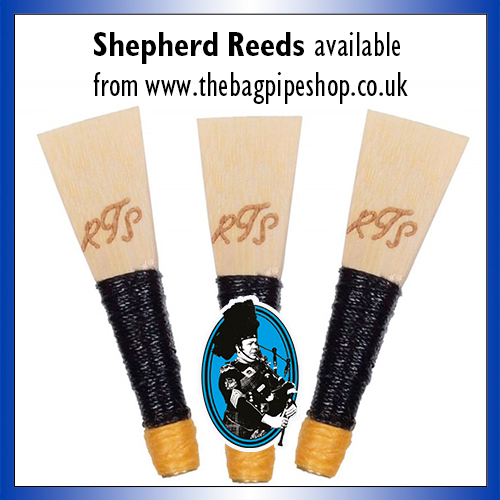By David V Kennedy
Yes, indeed: to watertrap or not to watertrap, that is the question! Some say that the trap is necessary in all climates. In an eight month 100˚F average summer? With less than an average 20% relative humidity?
Sounds dreadful, doesn’t it? Logical? Well, not at first sight. But hold on.
What does a watertrap really do? For me, it does this: it prevents unwanted moisture from getting to chanter and drone reeds thus enabling the reeds to stabilise in pitch and to live longer. It’s well known that saliva destroys reeds quickly, so the less saliva on the reeds, the better.

But aha! says the Socratic investigator: what happens to the flapper valve and the hemp around the blowstick stock? Is it not a fact that they will be saturated before their time?
Absolutely correct. But which would you prefer? Changing the valve more frequently or trying to find chanter and drone reeds to suit your pipe more frequently? Changing the hemp or dental floss? No big deal! I’ll take the change of hemp and valve over the others, any day.
But won’t the pipe be harder to blow and blow up? Not if the diameter of the trap tube is the same or larger than that of the blowstick tube. In fact, once you’ve got the bag up, you’ll probably find that it stays up better than without the trap. Why? Because the air in the bag has to travel through the valve tube and then through the blowstick tube … and before installation of the trap it could go through the entire diameter of the blowstick stock I.D.
But wait a minute, says the questioner. What if the bag is not good and tight before installing the trap?
Then you are in trouble! This happened to me on an alleged elk hide no-season bag that was fairly old. The bag began to get sloppy and not hold air well. So I dolloped it with hot seasoning and then put the trap in. Behold! A nice, tight bag and reeds sounding great even at 94˚F. I think that the lesson here is to be sure you have a nice, tight bag before putting in a trap.
With the right kind of seasoning, the fact that breath moisture will reach it in the bag at a minimum after the trap is in, gives a longer life to the seasoning and the bag tightness.

But how do I clean out my blowstick stock? Well; what do you really have to do there? If you have pushed the trap down level with the bottom of the stock then all you have to worry about is the tube in the trap and the top of the cork and the sides of the upper stock. Take a soft clarinet cleaner and go around them and for the tube get a small nylon brush and clean it out when necessary. Every piper has to be some sort of improvising genius, and this will be no challenge to most of you.
It is, of course, axiomatic, that ‘back home’ in Alba and in any high humidity climate, a water trap is indispensable. This came home to me with a big bang on my 1969 visit to the island of Coll and to the Highlands. I took my no-season elk hide bag and pipe over there and found to my utter dismay that after five minutes of playing, everything was dripping wet … the reeds all clapped up. Why? Because I had no watertrap; and also. because elk-hide is quite impermeable. One might get away with sheepskin without a trap (but I doubt it) but one certainly won’t with elk hide for very long. And I am not a ‘wet-blower’.
After hearing the steadiness of my reeds over here with a trap, I have become converted from a believer in saturated chanter reeds to just a touch of moisture in them. And, of course, a mere touch of moisture on drone reeds has got to be better than drops of water rolling down the tongue or inside of the reeds to cause a crash … which is the sound of the reeds closing up entirely, much to the piper’s discomfort.
Now, the nice advantage of the watertrap is this: if it works well for you in the desert, you just know it will work well for you in a cool, temperate climate – and this might just be the next competition you’ll be in!
• Adapted from the July 1979 Inrernational Piper


